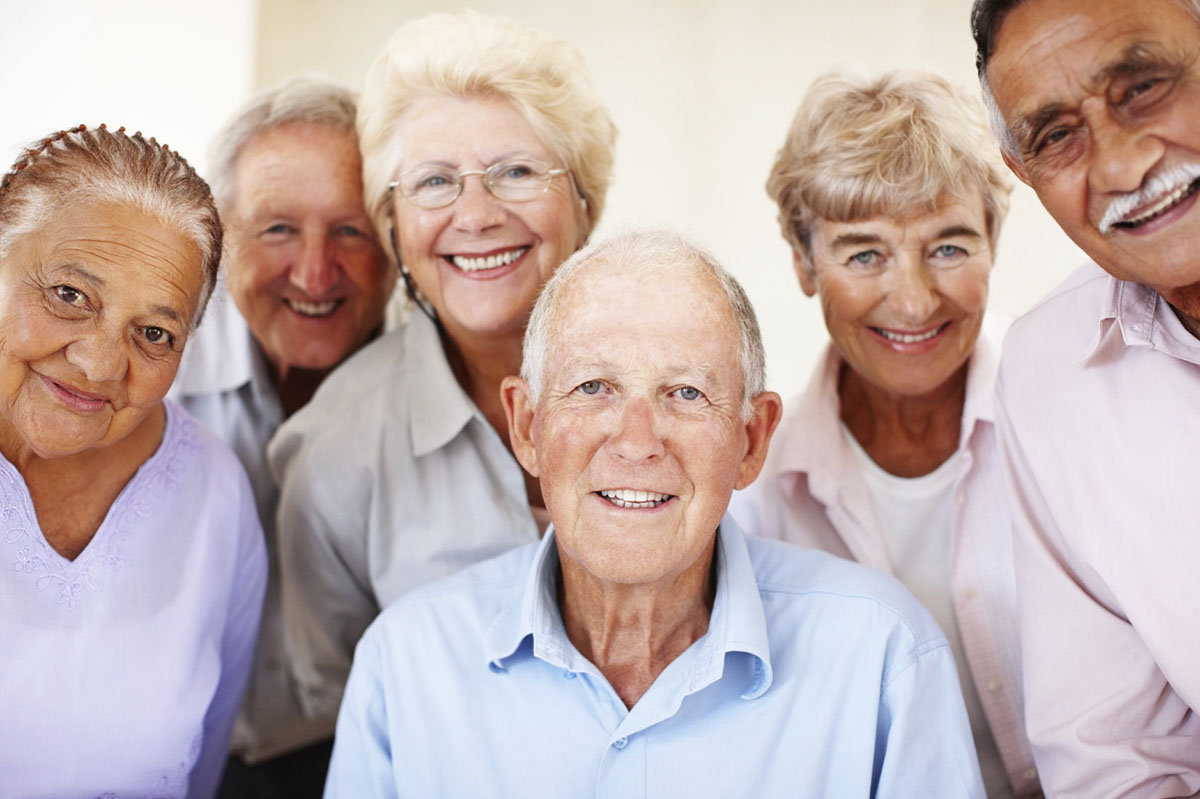
Coloring Isn't Just for the Kids!
Falls Pose Significant Risk for All Ages
Wondering
How to Eas
The Ever..
Beyond the
Older Americans
Seniors..
Gardening
Safe-dri..
Pay for Perf...
Medication..
Home For..
What's Mo..
Seven Fo...
Unlikely...
Coloring Isn’t Just for the Kids!
By Amanda Maurer
Who doesn’t have fond memories of sitting down on the floor with a coloring book and a box of crayons? Coloring has long been an inexpensive and fun activity for kids to stay entertained and out of mischief. When I was in grade school I remember envying the kids that had the big box of Crayolas. You know the one. It probably had 64+ crayons, with wild shades such as vivid tangerine, fuchsia, and jungle green. Don’t forget about the coveted crayon sharpener on the back of the box!
These days, coloring isn’t just for the kids. You may have heard about the hot trend of coloring for adults. It makes sense. Coloring is a simple way to be artistic. It’s soothing and calming. And you don’t have to be an art-pro to have a good time while doing it.
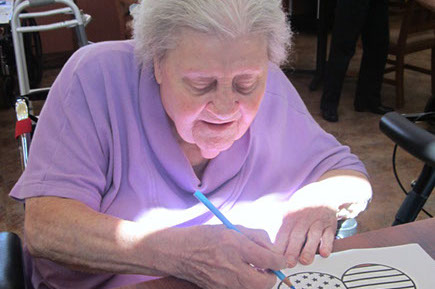
A quick look at the Crayola website (www.crayola.com) shows that they are pretty excited about adults getting in on the fun. The first menu option in their shop section is for “Adult Coloring.” They are marketing not only the old school crayons, but colored pencils, fine-line markers, fancy art kits, and sophisticated coloring books on premium paper – all with the grown-up Crayola artist in mind. They tout that their adult coloring books are a great choice for the mature color-lover in search of a “relaxing, fun, and artful escape that will leave you feeling calm, cool, and colorful!” Senior Centers and other groups are getting in on the fun. The Homewood-Flossmoor Park District now offers a weekly get-together to enjoy Adult Coloring. Their newsletter stresses that coloring can help to switch off our brains and alleviate anxiety. They invite the community to take part in coloring in a group atmosphere every Tuesday at 1pm at the Irwin Center. Coloring books can be purchased on site for $5, and colored pencils are available for $7. You can also bring your own supplies. The Marie Irwin Community Center is located at 18120 Highland Avenue in Homewood, Illinois. Call them at 708-957-7275 for more information. A report from CNN in 2016 discusses the mental benefits of adults picking up the crayons or colored pencils. It is noted in the article that groundbreaking research in 2005 showed that anxiety levels dropped when subjects colored mandalas (round frames with geometric patterns inside), while simply doodling did not have the same effect. Coloring is compared to meditation. It allows for participants to live in the moment and not focus on what may be ailing them. Coloring isn’t the same as art therapy, but there are still benefits for those looking for a way to relax creatively. Are you ready to pick up the crayons, colored pencils, and markers? I’m ordering my box now.. the one with the crayon sharpener on the back! Are you a senior citizen or disabled person that enjoys coloring or other art? Please let us know or share your thoughts in the comments section! Did you know that in 2017 Crayola retired the color Dandelion? Sources: http://www.hfparks.com/adult-programs/ www.Crayola.com http://www.cnn.com/2016/01/06/health/adult-coloring-books-popularity-mental-health/index.html Photo by Ann, Flickr, CC BY 2.0
Falls Pose Significant Risk for All Ages
By Amanda Maurer
Each year 2.8 million older people are treated in hospital emergency rooms due to falls. According to CDC.gov, one in every five falls will cause a serious injury such as a broken bone or a head injury.
How many of us know someone that has been critically injured after a fall?
I was at home with my significant other when he had a hard fall two months ago that landed him in the ER. He slipped on a slick floor, took a strange step to upright himself, and then hit a chair on his way down to the hardwood. As he lay on the floor, his ankle was bent at an unnatural angle and we knew right away that it was serious. I called for an ambulance and they took care of him as we went to the hospital. He ended up having what is called a bimalleolar fracture, which means that he broke his ankle in two places. In his case, his tibia
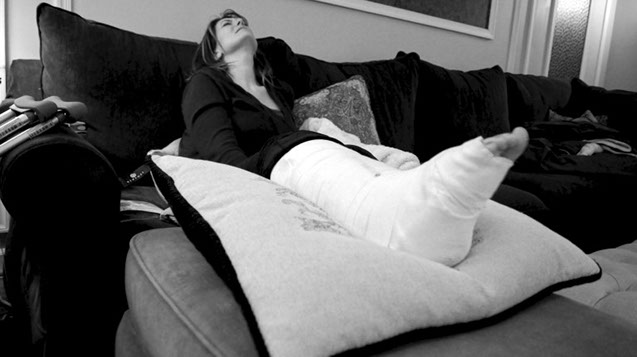
and fibula were broken. After his ankle was reset manually by the kind doctor, he had surgery the following week where he was put back together with metal plates and screws. He is now in physical therapy and doing very well, but it has been a long and difficult road for him during recovery.
My significant other is a healthy 37 year old. When someone of his age and health status has such a hard time after a fall, I can’t help but think of the elderly and the trauma they must go through after a slip and fall or other accident.
Older adults are more prone to falls due to weakness, vision problems, medication side effects, balance issues, and pain. Pair an older person’s increased fall risk with the fact that they tend to be more fragile, and you are set up for a critical and possibly life threatening injury. I sympathized with and cared for my partner as he underwent surgery, therapy, and regained his independence. I would imagine that going through this process with an elderly loved one would be that much more difficult for everyone involved.
While I am happy that he is nearly recovered, I know now that the best move is to avoid the injury altogether. The Centers for Disease Control and Prevention offer aging adults tips to avoid these falls and traumatic injuries.
Talk to Your Doctor
Your healthcare provider can evaluate your risk for falls
Ask them to review your medicines to look for interactions or if there is anything that makes you dizzy or sleepy, and more prone to falling.
Consider taking Vitamin D supplements and talk with your healthcare provider about this.
Do Strength and Balance Exercises
Look into exercises that can make you stronger, especially in your legs. This can help to improve your balance. Tai Chi is a great low impact exercise to try.
Have Your Eyes Checked
Be sure to get your eyes checked every year and update prescriptions as necessary.
If you use bifocals or progressive lenses, think about getting a pair of glasses with only your distance prescription. This can be good for outdoor activities such
as walking.
Make Your Home Safer!
Get rid of tripping hazards such as rugs and clutter.
Add grab bars inside and outside your tub or shower and next to the toilet.
Put railings on both sides of stairs.
Have good lighting: add more or brighter bulbs to ensure you can see clearly to avoid hazards.
If you know that you are at risk for falls, I strongly encourage you to talk to your doctor about having preventative physical therapy. The right outpatient therapy company or home health care agency can help. Remember that safety comes first.
If you have experienced a fall or injury, HBH Caring Hands home care can help by providing assistance in the home as you recover. They also provide assistance with activities that are no longer safe to be completed by those at risk for falls. For more information, please call 630-410-8880 or email info@hbhcaringhands.com. Visit them on the web at www.HBHCaringHands.com.
Sources:
https://www.cdc.gov/HomeandRecreationalSafety/Falls/adultfalls.html
Photo by Ted Eytan, Flickr, CC BY-SA 2.0

Wondering about Wandering & Getting Lost with Dementia
By Amanda Maurer
The Alzheimer’s Association reports that six in ten people with dementia will wander. I can’t think of many things that are scarier.
I remember a local news story from three years ago in the Quad Cities area. An 81 year old Muscatine, Iowa man that suffers from dementia and Alzheimer’s went to his doctor appointment in East Moline, Illinois in the early afternoon of September 26, 2014. He never returned home
that day. The community came together to search for this man who reportedly had stopped and asked for directions at a gas station, and seemed very confused. He ended up being found two days later in a wooded swampy area by an off-duty police officer that happened to be fishing in the vicinity. The elderly gentleman had spent one night in his van, and one night sleeping outside. He was in good physical condition when found, was taken to the hospital, and was reunited with his family. This story had a happy ending, but how many others do not?
Even with the best care and supervision, wandering can happen. It’s important to be aware of the risks and dangers of wandering, and take steps to avoid a dangerous situation.
The Alzheimer’s Association notes several warning signs of wandering. For example, if your loved one starts to forget how to get to familiar places, or tries to “go home” when already at home, it may be time to take action. The source also provides helpful tips for how to prevent wandering in at-risk persons. Some of their preventative tips are to put a daily routine in place that provides structure, and to avoid busy places that are confusing or that could cause disorientation.
Some communities have resources in place to aid in locating those that wander or become lost. Project Lifesaver is a program offered through the Rock Island County Sheriff’s Office. The program’s mission is to use state-of-the-art technology in assisting caregivers of victims of Alzheimer’s and other Related Mental Dysfunction Disorders (ARMD) who become lost. The program is described in its brochure as an electronic tracking system that uses a wristband transmitter and handheld receiver to locate those enrolled in the program. It is noted that people with Alzheimer’s Disease, Autism, Down Syndrome, and other developmental disorders are eligible for the program. Financial assistance may be available. For those in Rock Island County, you are encouraged to contact the Rock Island County Sheriff’s Office at 309-558-3900 for more information.
The Alzheimer’s Association promotes additional resources for those that wander. MedicAlert® + Alzheimer’s Association Safe Return® is described as a 24-hour nationwide emergency response service for those with Alzheimer’s or dementia that have wandered or are having a medical emergency. Once someone is reported as missing through the program, a community support network is activated to attempt to locate the missing person. An ID bracelet or pendant is also provided as part of the program.
Remember, wandering can happen at any stage of dementia. Be sure to plan ahead and be prepared to keep you and your loved ones safe.
HBH Caring Hands home care specializes in providing caregiver services to those affected by Alzheimer’s and dementia. For more information, visit their website at www.HBHCaringHands.com or call them at 630-410-8880.
Sources:
http://www.alz.org/care/alzheimers-dementia-wandering.asp
http://www.alz.org/care/dementia-medic-alert-safe-return.asp
http://www.co.rock-island.il.us/Sheriff/Programs/
http://muscatinejournal.com/news/local/a-fishing-trip-leads-to-missing-muscatine-man-s-discoveryarticle_a57b24ce-9b2e-527d-9878-19815df772c8.html
Photo by John D Fisher ARP, Flickr, CC BY-SA 2.0

How to Ease the Stress when Meal Planning with Diabetes
By Amanda Maurer
Whether you have recently been diagnosed with diabetes or have been managing your diet for some time, meal planning can be quite overwhelming. However, with the right information and self-discipline this stress can easily be avoided.
Planning ahead will be your best friend when it comes to regulating a diabetic diet. When you go to the grocery store make sure your list includes items not only for healthy meals but also healthy snacks. When going out to eat at a restaurant with friends or family, know how and what to order. Splurges may arise on occasion, just make sure to have a plan prepared for damage control.
Before heading to the grocery store, it is always a good idea to sit down and create a weekly meal plan. If cooking daily isn’t an option for you, try cooking in bulk.You can make double portions and save leftovers for the next day, or make even larger portions and freeze to use as needed.
If you need some meal ideas, check out websites such as www.diabetes.org, www.diabeticlivingonline.com or type in ‘diabetic recipes’ on any search engine. To help relieve the burden, there are numerous cook books and pamphlets for healthy meals as well. There are also meal-planning websites available to help save and categorize recipes and to even create a grocery list for you!
Going out to eat is inevitable for most Americans. And the good news is that you don’t have to feel guilty about eating at restaurants if you make the right decisions. If you have the option, try to choose restaurants that help make your meal plan easier to follow. If you don’t know what is in a dish, never hesitate to ask. Make sure to keep your portions the same as you would have at home, whether you have to give some of your food to a friend or take it home as leftovers. Don’t be afraid to ask for substitutions. Instead of fries, ask for a salad or vegetable. Ask for low-calories items, such as salad dressings, even if they aren’t on the menu.
Cravings and splurges can be curbed with a well-balanced meal plan. If you find yourself engulfed in thoughts of soft, sweet and fluffy goodies try to substitute with a healthier option. The best way to eliminate post-treat shame is to plan ahead! Before you indulge, determine when and how you will do it. You can remove not only the guilt, but also the health risks when you plan your meals and exercise plans around the splurge.
Any time we receive news that our daily lives will forever change, it is scary and overwhelming. But when it comes to a healthier diet plan, the positive gains will always outweigh the fear and unknown. Step back, do research and take the time to plan and you will find everything will flow much easier.
Further Reading:
www.Diabetes.org
www.DiabeticLivingOnline.com
Photo by Jules, Flickr, CCBY2.0
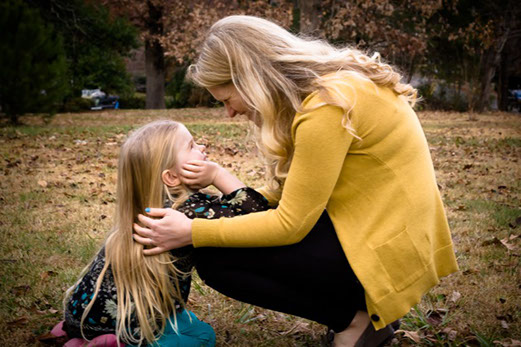
The Ever-Changing Relationship
By Amanda Maurer
Throughout life, we all experience many changes. Relationships with others are not excluded. This also includes the relationship between parent and child.
The beginning stages of the parent and child relationship is one that we most think of when the words ‘parent’ and child’ are used. A parent is the provider, comfort and guidance for their children. They keep their offspring on a schedule, they keep a roof over their heads and they help them make life’s decisions. They read them bedtime stories and tuck them in at night. Parents take their children to the doctor when they are ill, and they nurse them back to health.
As children become adults, the playing field levels out a bit. Parents are there for comfort
and guidance, but the actual provisional role starts to dissipate. Relationships with their children start to evolve and turn into more of mutual adult friendship. They can now discuss things that they wouldn’t have, before. While it is important to keep the parental respect intact, the dynamic definitely begins to change. Adult children don’t need their parents to take them to the doctor anymore and as much as they wish it were not true, their parents are not obligated to nurse them back to health.
Then a major shift occurs in the parent and child relationship. Parents that were once looked at as immortal super heroes in their children’s eyes, start to show the wears and tears of life. Their joints may start to ache, they may start to forget things and health problems may start to arise. Instead of their children looking at them as an unstoppable source of comfort and guidance, they may feel the need to step in and provide for their parents.
The relationship between elderly parents and adult children is probably one of the most controversial and difficult relationships we will encounter in our lives. Communication is key, and boundaries will need to be established. While children may feel it is their place to step in and ‘take over’ the role as parent, that can be the most detrimental choice to the relationship. Being available for assistance when necessary is helpful, but down-grading and shaming is not.
All relationships change over time. The key is to acknowledge the changes and adapt. The best attitudes to have to help with this process are acceptance, honesty, and faith in one another. If you start to feel strain about how you are relating to an aging parent, it may be wise to talk with others about it.
As always, remember that help is available. A good home care agency will be able to discuss the changing roles in your life and will provide information and guidance on what to do when aging parents need a helping hand. HBH Caring Hands home care is available to answer your questions, and invites your call or e-mail. Contact Caring Hands at (630)410-8880, or via e-mail at info@hbhcaringhands.com.
Photo by Rob Briscoe, Flickr, CCBY2.0
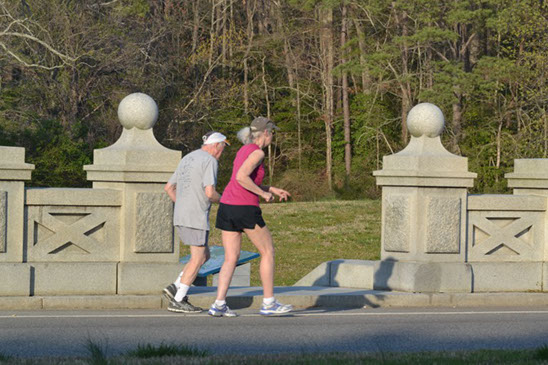
Beyond the Gym: Activities & Exercises for those Suffering from Arthritis
By Amanda Maurer
When something hurts on our bodies, our automatic human reaction is to immobilize it. With arthritis, however, the lack of movement may actually cause more damage. The strength of your muscles and surrounding tissue is vital to supporting your bones. Not exercising will weaken those muscles and in turn, create more stress on your joints.
Does this mean you need to head to the nearest gym and get a membership? Not necessarily. There are plenty of simple and at-home activities and exercises that you can engage in on a daily basis. Not only will these assist with strengthening the muscles around your joints but they can help maintain bone strength, give you more energy throughout the day, make it easier to sleep at night, help control weight, enhance your
quality of life and even improve your balance!
I tend to have pain in my wrists from time to time. I’m not sure if this is from typing, texting, or just getting older, but I know that I tend to feel better when I do certain stretches and movements where I experience pain.
Keep in mind, everyone’s body is different and the type of arthritis you suffer from does impact the best movements and activities that will help you. You should always consult with your doctor before beginning any sort of strenuous exercise routines.
The four main categories of arthritis-friendly activities are aerobic, muscle-strengthening, balance and flexibility.
Some moderate aerobic activities include; brisk walking, swimming, mowing the grass and social dancing. Just remember to start slow and increase the activity gradually. Listen to your body and do not ignore the pain.
A few more vigorous aerobic activities would be jogging/running, sports such as tennis, racquetball, or soccer, jumping rope and aerobic dance or spinning classes.
Muscle strengthening activities should also be added, about two times a week, to aerobic activities. These can include lifting weights (should be light enough that the movement can be performed 8 to 10 times without pain or excessive fatigue), working with resistance bands or heavy gardening. There are also many muscle strengthening videos available for those with specific types and areas of arthritis.
Balance activities are extremely helpful if you are at a higher risk of falling or losing your balance. Backward walking, side stepping, toe walking and standing on one foot are great for improving your balance, and can be done within your own home at any time throughout the day. Tai Chi, which is a series of movements performed in a slow, focused manner and accompanied by deep breathing, has been proven to be wonderful for those suffering from arthritis.
Flexibility activities are essential to improve your range of motion. These movements include squats, side bends, forward bends, straight arm raises, trunk twists, leg raises and more. Check out the training system “1,000 movements” created by Dr. Nikolay Amosov for a daily routine that will help keep your range of motion intact.
The main concept to remember is “use it or lose” when it comes to keeping up your joint health. The benefits to keeping active, as hard as it may be some days, will most definitely improve your every-day life.
Photo by Tony Alter, Flickr, CCBY2.0

Older-Americans in the Work Force
By Amanda Maurer
Are you one of the millions of Americans aged 55 or better that work full-time or part-time? While many assume that those in their golden years are enjoying retirement, the truth is that there are staggering numbers of people still working well into their 50s, 60s, and beyond.
According to the National Council on Aging (NCOA), by 2019, over 40% of Americans aged 55+ will be employed, making up 25% of the U.S. labor force.
Some seniors choose to work to remain challenged and stimulated. Other seniors would love to retire, but opt to remain in the workforce for financial reasons and to maintain their independence. Whatever the reasons that older-Americans choose to remain working, it seems that they are highly valued by employers. Older workers tend to be
rated favorably in areas such as “judgment, commitment to quality, attendance, and punctuality” according to the Committee on Economic Development, reported by NCOA. My own father is a retired firefighter. He was in this line of work for nearly 30 years, finally hanging up his fire helmet when he was in his fifties. Most people would say that my dad is lucky to have retired “early.” In reality, he still spends time on home improvement jobs such as installing windows and siding. While he’s not quite as ambitious about climbing onto a roof like a monkey as he once was, he could surely give a younger worker a run for their money when it comes to technique, quality, efficiency, and know-how. Go, dad!
I’m happy that my father can continue working when he has the desire to. This sadly is not the case for thousands of older-adults wishing to work in America. NCOA reports that “218,000 mature workers indicated they wanted employment but were discouraged by their job prospects” according to a 2014 study.
If you’re a senior looking for employment, please keep in mind that there are programs available to help get you back to work. One such program is the Senior Community Service Employment Program (SCSEP). It was formed in 1965 to help unemployed, low-income seniors aged 55+ find work. SCSEP is funded by the Department of Labor and serves nearly every county in the USA. According to NCOA, participants “build skills and self-confidence, while earning a modest income.” It is also noted that most program participants end up finding permanent employment after their experience with SCSEP.
Another strategy for seniors wanting to work is to consider the fastest growing jobs in America. According to AARP, the top two fastest growing jobs by 2018 are projected to be “home health aide” and “personal and home care aide” with a projected total of 836,700 jobs. These types of jobs may be the perfect fit for a senior that is patient, kind, and wanting to make a positive impact on someone’s life.
If you are interested in the Senior Community Service Employment Program, please contact the National Council on Aging at (571) 527-3900 to find your local SCSEP office. If you are interested in a career in home care, we urge you to contact local home care providers in your area. If you are interested in being a caregiver in certain parts of Illinois or Iowa, please visit www.HBHCaringHands.com for more information or to apply.
Thanks for reading, and don’t work too hard!
Sources:
1. https://www.ncoa.org/news/resources-for-reporters/get-the-facts/mature-workers-facts/
2. http://www.aarp.org/work/working-after-retirement/info-06-2011/jobs-for-a-second-career.html
3. Photo by Scott Lewis – Flickr – CCBY2.0
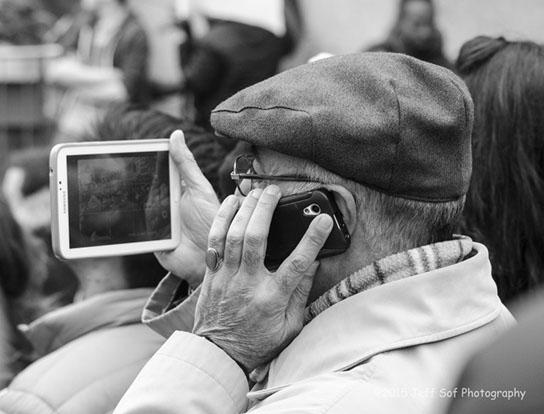
Seniors Make Moves in Mobile Gaming
By Amanda Maurer
Are you someone that enjoys gaming? I’ll be honest. I used to equate the word “gaming” with someone hunkered down in a basement, playing a computer game for hours on end, and never seeing the light of day. With the popularity of smartphones, tablets, and the games that go with them, I realized that I might now be considered a “gamer” also. Well, a mobile-device gamer, anyway.
Mobile gamers often choose to get games (referred to as apps, or applications) on their smartphones and tablets. Apps are available for free or for purchase through an app store and will allow a user to do things such as connect on Facebook, play music, or play their favorite game.
Candy Crush is an example of a popular game app. I hope I’m not the only person still playing that one!
According to data from statista.com, it looks like I am not the only one with a Candy Crush or app addiction. As of March 2017 there were 2.8 million apps available for purchase for Android users. Apple’s App Store is the second largest app store with 2.2 million available apps. With those staggering numbers, it’s likely that there is literally an app for everyone’s tastes and abilities!
Mobile gaming is a multi-billion-dollar industry with millions of apps to discover, and senior citizens are not being left behind. Statista.com reports from a study conducted in June 2016 that senior app-users age 65 and older spend 42.1 hours per month accessing apps through mobile devices, and 23.4 hours per month accessing apps through tablets. That number is impressive considering the stereotype that seniors and technology do not mix.
With all the hours that we spend with our mobile games and apps, it begs the questions: are there any benefits?
A 2013 study from the scientific journal Nature confirms that in addition to certain gaming options helping those with attention deficit hyperactivity disorder (ADHD), early stages of dementia, brain injury, stroke, “chemobrain”, addiction, and other conditions – gaming can help healthy people, as well.
When choosing a game, try to find something that challenges you and helps with increasing your focus.
Lumosity and Brain Trainer Special are apps that claim to help users with memory, attention, problem solving, concentration, and flexibility of thinking. Are you interested in a game that was designed by neuroscientists with brain health in mind? If so, CogniFit Brain Fitness may be for you. Do you enjoy crossword puzzles? Crosswords with Friends is an app that I may or may not be currently addicted to!
Before committing yourself to a game it may be helpful to do a little research to see which app will best meet your needs. CNN.com published a nice list of brain training apps that we encourage you to check out if you’re interested in a brain-healthy app (http://www.cnn.com/2014/09/09/health/brain-training-apps/index.html).
Good luck, and happy gaming!
SOURCES:
Statista.com
http://www.cnn.com/2014/09/09/health/brain-training-apps/index.html
Nature.com/nature/index.html
Photo by Jeffrey Sofroniou – Flickr – CCBY2.0
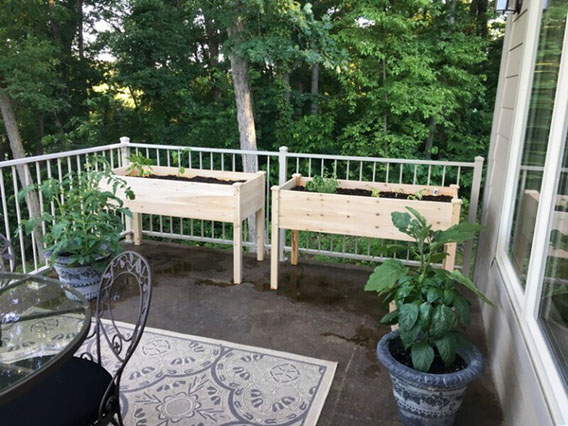
Gardening for the Elderly & Disabled
By Amanda Maurer
If you’re an experienced gardener you know first-hand how rewarding it is to see your labor turn into the perfectly ripened fruit or vegetable to serve your family. There’s something special about taking produce, that you cultivated yourself, directly from the garden to the kitchen.
I am trying my hand at gardening for the first time this year. As a novice that isn’t quite sure if my thumb is green or not, I kept it simple. I picked out seeds for tomatoes, green peppers, sweet banana peppers, habaneros, and jalapenos. If things go as well as I hope, I plan to add spinach, cucumbers, and other favorites to the planting line-up for next year.
When I was first digging in the soil and planting seeds, I realized that gardening is about so much more than the end-result. I was out in the sunshine and enjoying nature. My head was clear and calm. I was getting fresh air and exercise. I felt good!
I am hopeful that this is a new hobby I can enjoy for many years to come.
It’s important to remember that a passion for gardening does not have to be stifled as we age! But, we may need to make some adjustments to keep enjoying the activity.
For those with bad backs, being able to stand up or sit while gardening could mean the difference between continuing the hobby or giving it up altogether. Bending and kneeling to work in the garden can be taxing for novice and seasoned gardeners alike. One popular alternative to the traditional “down on your knees in the dirt” garden, is opting for a raised or elevated garden. Many retailers such as Lowe’s and local garden centers will have senior-friendly options available for gardening at various heights and abilities. An elevated garden can also be a wise option for wheelchair users to continue with a hobby they love.
If you aren’t quite ready to maintain your own garden, there are plenty of other ways to get involved with this fun activity. The Chicago area boasts community vegetable gardens, gardening networks, “adopt a corner” projects, and gardening clubs throughout the area, and asks for volunteers to get involved. Chicago’s 47th ward has recognized the large interest in community gardening and native plantings. According to the ward’s website at Chicago47.org, they offer residents a monthly Gardening Network & Guest Speaker Series that includes a forum for “the exchange of ideas to inform, enlighten and inspire everyone to be involved in the greening, beautification and conserving of natural resources of the 47th ward and the city as a whole.”
With so many ways to get involved in this heart-healthy activity, we encourage you jump in and take part! For more information on community gardening, please contact your city administrator’s office.
Are you a senior that enjoys gardening? We would love to hear from you! Please contact me at amaurer@hbhcaringhands.com.
SOURCES:
1. www.Chicago47.org Chicago’s 47th Ward
2. Photo by Ann Wallace

Safe Driving for Seniors – Help is Available!
By Amanda Maurer
Have you noticed new dings and dents in an aging parent’s car? What about a sudden influx of traffic tickets, or stories of poor experiences on the road?
As a person ages they may experience failing eyesight, confusion, pain, and slowed reaction times. Couple these issues with medication side effects or general anxiety and you have the perfect recipe for unsafe, and even dangerous, driving.
When getting behind the wheel starts to present safety issues for someone you care about, it may be time to consider a conversation about hanging up the keys. Giving up this privilege can be easier said than done. Here are some tips for having this delicate conversation:
1. Make sure your concerns are valid. How long has it been since you rode in the passenger seat of mom’s car? It’s best to ensure your concerns are justified before approaching the topic.
2. Come from a place of caring. Make sure that your loved one knows you are concerned for their safety and wellbeing above all else.
3. Get the doctor involved. An evaluation from a trusted physician may help convey the risks and safety factors involved.
4. Do your homework. Research agencies and other available resources in the area that provide transportation services for seniors and the disabled.
5. Alleviate other concerns. Your loved one should know that they will not have other freedoms taken away if they decide to stop driving. Make sure they know they will not be a burden.
If you decide it’s time to have the driving conversation, keep in mind that help is available!
Many private duty home care agencies specialize in providing transportation services such as rides to appointments, accompaniment to doctor visits, and errand running such as grocery shopping and prescription pick-up. A good agency will offer these services, and a great agency will communicate that they can assist with the preparation that goes into these trips as well.
Would it help for your parent to have someone assist with scheduling doctor and specialist appointments? What about maintaining a shopping list? Would it be helpful to have someone that can assist a parent with getting ready before an engagement? Each of these services are available through the right private duty home care agency.
We wish you safe driving this summer season, and always! Thanks for reading!
For more information on how to choose the right home care agency, please see our blog on this topic: http://bit.ly/choosingprivateduty
Sources:
1. Picture by Linus Bohman. License CC BY 2.0

Pay for Performance 2017: $500+Million in Penalties for Hospitals due to High Readmission Rates; Home Care Can Help
By Amanda Maurer
Did you know that in 2017, hospitals are on track to be penalized to the tune of $528 million dollars?
The penalties are part of what is known as the US government’s Hospital Readmission Reduction Program (HRRP). The program was started as a provision of the Affordable Care Act (AKA Obamacare or PPACA) and is an effort to reduce costly and unnecessary hospital
readmissions for Medicare recipients.
The penalties did not happen overnight. They were gradually phased in over the last five years, as the Readmission Reduction program expanded.
“So, how does all of this work?” you may ask. To put it simply: hospitals with high rates of 30-day readmissions for patients with certain diagnoses have seen their overall reimbursement from Medicare drop over the past few years, sometimes dramatically. The intent is to truly pay for performance, with the hope that a financial reward will incentivize health care providers to ensure a higher quality of care and safer transitions for their patients, leading to fewer hospital stays and healthier people.
The first year that the penalties were implemented there was a maximum penalty of a 1% across-the-board reduction in Medicare reimbursement for hospitals with high readmission rates. The next year, in fiscal year 2014, the maximum penalty climbed to a 2% reduction in Medicare dollars. The program was fully phased in during the following year with the maximum 3% reduction in pay for hospitals in most need of improvement.
What exactly is a 30-day readmission?
A 30-day readmission can be explained through the scenario of Mrs. Johnson, a 75 year old Medicare recipient. Mrs. Johnson was admitted to a local hospital on June 5, 2017 with congestive heart failure (CHF). After receiving treatment she was discharged back to her own home two days later on June 7th. Mrs. Johnson did not fully understand her discharge instructions, including the low sodium diet her doctor ordered. She also did not comply with taking her new medications. Within two weeks Mrs. Johnson was back and admitted to the hospital. Since CHF is one of the diagnoses that is analyzed as part of the Hospital Readmission Reduction Program, this readmission within 30 days back to a hospital will count against the original hospital’s record, possibly causing penalties.
If you’re wondering how bad the readmission problem is, and why these somewhat drastic measures were implemented, let me share these figures with you:
There are over 35 million hospital discharges annually in the United States
Among Medicare patients, almost 20% who are discharged from a hospital are readmitted within 30 days.
For Medicare beneficiaries with heart failure, 27% are readmitted to the hospital within 30 days of discharge.
The cost of unplanned hospital readmissions is 15 to 20 billion dollars
Given the nature of the readmission dilemma, preventing avoidable readmissions has the potential to profoundly improve both patient quality of life, and also the financial wellbeing of our health care systems.
What can cut down on the hospitalizations?
This is the million dollar question. Or should I say the 20 billion dollar question.
While the readmission reduction program is controversial at times, one solution that the healthcare field agrees on is that safe care transitions are more important than ever as patients move from one healthcare setting to another, or to the home. Implementing a Transition Coach to oversee the details and risk factors for discharge/transition is one effort that agencies are undertaking to combat the readmissions. Thorough teaching of a patient’s discharge plan is also an important element. Patients need to understand what they need to do to keep themselves healthy.
Perhaps most important is the consideration of and implementation of post-acute care services, such as Home Services, Home Nursing, and Home Health Care (yes, they’re actually three different things).
An excellent Home Services, Home Nursing, or Home Health Agency can, together or separately, pave the way for a safe transition that includes ensuring discharge instructions are followed, medications are taken, and the home is assessed for safety.
At this point it’s not just a hospital problem; it is a challenge for the entire health care community. Skilled Nursing and Rehab Facilities will soon feel the financial effects of 30-day hospital readmissions, as they become a part of the program next year. This is all the more reason for hospitals and skilled facilities to work closely with post-acute care providers such as Home Service, Home Nursing, and Home Health Care Agencies. Together we can prevent avoidable hospitalizations to ensure a brighter day for our older-adults, while at the same time working to save our hard earned healthcare dollars.
HBH Caring Hands is a Home Service and Home Nursing Agency that actively advocates and assists patients discharging from the hospital or skilled nursing & rehabilitation facility to home. Caring Hands has a “Hospital 2 Home” or H2H program to ensure safe transitions for at-risk patients. For more information, visit us online at www.HBHCaringHands.com, or call us toll-free at 844-202-1316.
Sources:
http://www.kff.org/medicare/issue-brief/aiming-for-fewer-hospital-u-turns-the-medicare-hospital-readmission-reduction-program/
https://www.uptodate.com/contents/hospital-discharge-and-readmission
http://www.onlinejacc.org/content/61/4/391
Photo: courtesy of taxrebate.org.uk/https://flic.kr/p/akrJam license: CCBY2.0

Medication Reminders: Priceless Solution for Senior Citizens
By Amanda Maurer
Levothyroxine. Rosuvastatin. Fluticasone. Doesn’t it seem like the names of our most commonly used prescription drugs are getting longer and more difficult to pronounce?
If you have trouble keeping tabs on the difference between your Omeprazole and your Lisinopril, you are definitely not alone.
According to the CDC, adverse drug events cause over 700,000 ER visits each year, and nearly 120,000 patients need to be hospitalized for further treatment after these events. As people age, they typically take more medications. Older adults (65 years or older) are twice as likely to take more medications. Older adults
(65 years or older) are twice as likely to come to emergency departments for adverse drug events (over 177,000 each year) and nearly seven times more likely to be hospitalized after an emergency visit.
Imagine the burden and confusion for an older adult that is taking 5, 10, or even 20-plus medications. Three pills in the morning, two with each meal, one only at bedtime, two as needed.. it can go on and on. Add in some general age-related forgetfulness, and a big problem can start to take shape.
“A medication box or pill dispenser can be invaluable for someone needing a little additional help with keeping things organized.” says Romy Macasaet Jr., President of HBH Caring Hands. “What we often see is that as loved ones start to age and slowly become more forgetful, over time a med box alone just isn’t enough to ensure medication compliance and patient safety."
That’s where having a trusted friend, family member, or hired caregiver to give Medication Reminders comes in to play. Having an experienced helper in the home to remind your loved one, in person, to take their medication is often the best solution to medication management problems.
“Another set of hands to assist and eyes to see and ensure the proper medication is taken, at the right time, can be priceless for those wanting to remain in the comfort of their own home.” Mr. Macasaet adds.
For more information on affordable Medication Reminding services, please call HBH Caring Hands at 844-202-1316.
HBH Caring Hands is a licensed Home Services and Home Nursing Agency that provides assistance with medication reminding, showering/bathing, personal care, light housekeeping, transportation to appointments, shopping, laundry, linen change, companionship, dementia care, observation/supervision, medication set-up, wound care, and more.
www.HBHCaringHands.com
Email: info@HBHCaringHands.com
Sources:
1. Photo credit: https://flic.kr/p/cHhCc5 license CC BY-SA 2.0
2. https://www.cdc.gov/medicationsafety/adult_adversedrugevents.html
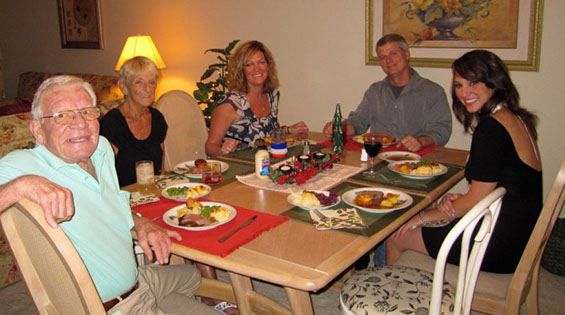
Home for the Holidays: Tips for Helping an Elderly Loved One
By Amanda Maurer
The holiday season is in full swing! While there isn’t much snow on the ground right now, I can definitely feel the holiday cheer!
For many of us, the holidays are a time to gather together with loved ones to enjoy each other’s company and create fun memories. If a visit to an elderly family member is on your holiday itinerary, consider the following tips to make your holiday as smooth as Bing Crosby, for loved ones of all ages.
• Take it slow. Keep in mind that your loved one may have slowed down considerably since the last time you saw him or her. Pay attention, and don’t let your loved one overdo it.
• Pencil in time to rest. Remember that certain activities may be exhausting to an elderly relative. Keep this in mind when planning holiday activities.
• Lend a hand. Try not to place too much of a burden on an older relative if they are hosting festivities at their residence. While it may be easier to hold holiday functions at the home of the elderly person (especially if it is difficult for them to travel), keep in mind that it may be just as difficult, if not impossible, for them to coordinate and prepare a meal for several people.
• Be on the lookout for the blues. Is your loved one feeling down? Have they recently lost some of their independence, or a spouse? Are they lonely? Helping your loved one to hire a companion or helper around the home may give them some much appreciated socialization. Pets can also be great companions, if the person is able to properly care for the pet. Trips to senior centers or adult day care are other fun ways to make new friends and spice up the day.
• Watch for signs that help may be needed. Holidays are a time when families often notice that a loved one isn’t doing so well at taking care of themselves, or responsibilities.
o Is the laundry done, and the house kept?
o Is your loved one able to drive safely, or do they have alternate ways of getting groceries and other necessities?
o Are they able to safely take out the garbage?
o Can they change their bed linens on their own?
o How is their balance, and are they able to safely get in and out of the shower or bath? Are they bathing regularly, and keeping up on personal hygiene?
o How are they doing at managing their medications? Do they keep their medicine in a pill box to keep things organized? Do they ever forget to take their medicine?
o Has your loved one lost weight? Ask them about how they prepare their meals, and what they usually eat each day.
If you notice over the holidays that a loved one is declining, consider calling a licensed Home Services agency to discuss options and pricing. Safety is the number one concern, and the right home care agency can help ensure your loved one is well taken care of through the holidays and beyond.
We wish you a joyous holiday season!

What’s Most Important to You for End-of-Life Care?
By Amanda Maurer
Have you ever considered how you would help care for a loved one nearing the end of their life? Have you ever thought about what you want it to be like when you pass away, or when you are nearing your own death? It can be difficult to think about at first, but it’s so important to make your wishes known, and to put them into writing.
I thought about what would be most important to me when looking for someone to assist with end of life care for me or a loved one.
Here is my short list.
1. Home. When nearing the end of life it’s only natural to want to spend your final days in the comfort of home, and surrounded by loved ones. I know that people can receive excellent hospice care at a facility, and sometimes that is the better option. But, given the choice, I would much rather be in my own home. Side note: you can receive hospice and palliative care at home – you don’t have to be in a facility.
2. Comfort. At the top of my list would be ensuring that my loved one is safe and comfortable. I want their pain to be controlled, and any discomfort to be minimized.
3. Experienced Caregivers. Knowing that a family member is in good hands can help to alleviate some of the stress and worry, and make the process better for everyone involved.
4. Compassionate Care. While knowledge and experience are paramount, those things don’t mean much without a gentle touch and a show of compassion.
When someone passes away we often think of everything: the good times, the space they will leave, and how much they will be missed. In the midst of the bereavement process, I think it is especially comforting to know that a loved one has had a peaceful passing. From my experience, hospice and palliative care services can be a tremendous help in assuring a gentle experience at the end-of-life.
If you are not familiar with hospice and palliative care, I highly recommend that you spend a little time researching the service that is available to those determined (by a doctor) to have six months or less to live. Hospices offer many services that often aren’t taken advantage of until the very end (days before death), and families usually wish they would have known about the service sooner. Did you know that hospice agencies provide bereavement support to families for several months after the passing of a patient? They also offer spiritual support, nursing, and a plethora of support through their social services. What’s great is that hospice services are often available at no out-of-pocket expense.
While caring for someone at the end of life can be both physically and emotionally taxing, a good hospice agency will be able to help make the process easier by addressing physical, emotional, and spiritual needs. For the areas not covered by a hospice agency, an experienced Private Duty Home Care Agency can help to fill in the gaps. The right Private Duty Home Care Agency can be there to provide day to day care and assistance with activities such as bathing, personal care, incontinence care, light housekeeping, observation and supervision, companionship, and more.
If you are looking ahead to what you may want in place at the end of your own life, or helping a loved one with their plans, we invite you to do further reading on the topic. The National Institute on Aging has great resources here: https://www.nia.nih.gov/health/end-of-life
If you have questions regarding Private Duty Home Care Services at the end-of-life, we invite you to call and speak to one of our experienced representatives at HBH Caring Hands at 844-202-1316.
HBH Caring Hands is a Home Service and Home Nursing Agency that provides support to clients in the comfort of home, and specializes in supporting hospice and palliative patients at the end-of-life. Caring Hands also provides services such as shower and bathing assistance, laundry/linen change, light housekeeping, transportation/errand running/shopping, accompaniment to appointments, 24 hour care, dementia care, medication management and set-up, medication injection/IV therapy, wound care, lab draws/blood draws, and health monitoring on a private pay basis. For more information, visit us online at www.HBHCaringHands.com, or call us toll-free at 844-202-1316.

Seven Forms of Elder Abuse and How to Report Them
By Amanda Maurer
Did you know that there is more than one type of elder abuse? Abuse does not have to be physical in order for pain and distress to be inflicted. In fact, there are seven different types of abuse that can affect our vulnerable senior population. It’s important to be aware of the different forms of abuse so that you can know it when you see it, and then you can say something to stop it!
First things first – what is elder abuse?
Elder abuse is any negligent act by a caregiver or any other adult that causes harm or a serious risk of harm to a vulnerable adult. According to the Illinois Department on Aging, Illinois law defines abuse, neglect, and exploitation as follows:
1. Physical abuse – inflicting physical pain or injury upon an older adult
2. Sexual abuse – touching, fondling, intercourse, or any other sexual activity with an older adult, when the older adult is unable to understand, unwilling to consent, threatened or physically forced.
3. Emotional abuse – verbal assaults, threats of abuse, harassment or intimidation.
4. Confinement – restraining or isolating an older adult, other than for medical reasons.
5. Passive neglect – the caregiver’s failure to provide an older adult with life’s necessities, including, but not limited to, food, clothing, shelter or medical care.
6. Willful deprivation – willfully denying an older adult medication, medical care, shelter, food, a therapeutic device or other physical assistance, and thereby exposing that adult to the risk of physical, mental, or emotional harm – except when the older adult has expressed an intent to forego such care.
7. Sexual abuse – touching, fondling, intercourse, or any other sexual activity with an older adult, when the older adult is unable to understand, unwilling to consent, threatened or physically forced.
The National Council on Aging reports that approximately 1 in 10 Americans aged 60+ have experienced some form of elder abuse. 1 in 10! That’s ten out of every 100 seniors. With numbers this high, chances are that WE ALL probably know someone that has been affected by elder abuse!
Another disturbing fact about elder abuse is that a victim is more likely to be taken advantage of by someone they already know, instead of a stranger. A recent study reports that family members are the most common perpetrators of financial exploitation of older adults.
So what can you do to help? Elderly Americans need our support more than ever. The first thing you can do is gain knowledge, like you’re doing right now. If you suspect someone is being mistreated or abused in any way, you should report it immediately to the proper authorities so that a proper investigation can be conducted, and any harm can be stopped ASAP.
The Illinois Department on Aging provides the following guidelines for reporting suspected abuse:
If the situation is serious, threatening, or dangerous always call 911 or your local police department right away.
To report other suspected abuse, financial exploitation, or neglect of an older person or a person with disabilities age 18-59 call the statewide 24-hour Adult Protective Services hotline: 1-866-800-1409, 1-888-206-1327 (TTY).
For residents who live in nursing facilities, call the Illinois Department of Public Health’s Nursing Home Complaint Hotline: 1-800-252-4343.
For residents in Supportive Living Facilities (SLFs) call the Illinois Department of Healthcare and Family Services’ SLF Complaint Hotline: 1-800-226-0768.
The IDOA also reminds us that certain professionals are required by law to report suspected abuse. Be sure that you know the responsibilities of your job related to reporting abuse, and take them seriously. Workers in the following fields are required to report suspected abuse of older persons who are unable to report it themselves.
The Illinois law mandating the reporting of abuse applies to professionals delivering service to older adults in the following fields:
• Social services
• Adult care
• Law enforcement
• Education
• Medicine
• State service to seniors
• Social workers
IDOA goes on to state that mandatory reporting requirements only exist when the reporter believes the victim is not capable of reporting the abuse themselves.
Now that we have a clear picture of the many different forms of abuse, I hope everyone will take the time to watch out a little more closely for our elderly friends. Remember, you may be the best eyes and ears for an elderly loved one, friend, or client - and you very well may be the only person there to speak up to protect them from abuse.
Sources and further reading:
1. https://www2.illinois.gov/aging/protectionadvocacy/pages/abuse_reporting.aspx
2. https://www.ncoa.org/public-policy-action/elder-justice/elder-abuse-facts/
3. https://www2.illinois.gov/aging/protectionadvocacy/documents/breaksilenceeng%203-13.pdf
4. https://ncea.acl.gov/resources/state.html#Illinois
5. https://ncea.acl.gov/whatwedo/research/statistics.html#perpetrators
6. Photo credit: https://flic.kr/p/7eKGxr license CC BY-SA 2.0
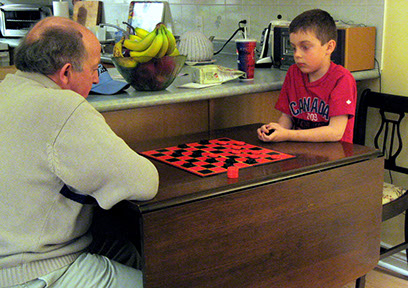
Unlikely Friendships
By Amanda Maurer
Yesterday I found an endearing story online while browsing on social media. It was a video that was one of those heartfelt, feel-good stories about an unlikely friendship. The story is that a young man ended up moving in with his elderly neighbor while she battled cancer. He acted as her caregiver and most of all as her friend. The video shows selfies of them eating pizza, having movie nights, and just all out enjoying each other’s company.
This sweet video reminded me of one of my own unlikely friendships from when I was a kid in grade school. At the time, my mom - who is hard working, smart, and kind (but that’s another story in itself) - was working at a local nursing and rehab facility. She wore a lot of hats, and was the director of activities and also social services.
Me, being a bored kid on summer break, would ride my bike to the facility to see if there were ways I could volunteer (and get out of my older brothers’ hair for a while). Mom and her team of activity aides were great and could always find a way to put me to work. I remember pushing residents in their wheelchairs to get to activities, assisting with marking bingo cards for those that needed extra help, handing out prizes, making decorations, and even taking part in holiday shows for the residents. On certain days I would get to deliver newspapers and mail. I remember feeling really grown up once or twice when I got to volunteer in the gift shop. These times were a lot of fun for me, and I felt like I was helping. In reality, I hope I wasn’t being a pain to the actual workers (sorry if you ever had to deal with an annoying ten-year-old-me while trying to do your job).
Throughout this time “helping” I did have certain favorites. The unlikely friendship I mentioned comes in when Mom had the idea to put me to real use.
There was one resident in particular, let’s call him Jack. Jack was an elderly gentleman that rarely left his room or interacted with others. He had no family or friends to speak of. Mom let me know that Jack was depressed and would stay in his pajamas all day, and shunned most social interaction. There was one thing, however, that could bring Jack out of his shell: checkers.
Mom told me one day that I would be playing checkers with Jack. One of the kind aides got us all set up in a visiting room down the hall. Jack dressed up for the visit. Under his arm was a very large checkerboard made of fabric. It reminded me of red and black coarse burlap. The checkers themselves were oversized also. Of course, the large size was to make gameplay easier for Jack due to his declining eyesight. For me as a child, I simply thought it was neat.
Being so many years ago, I couldn’t tell you what we talked about as we played. I can’t tell you who won most of the games. But I can tell you that we sat and played for hours that day. We were both slow and thoughtful with our moves, and tried to give each other a challenge.
This wasn’t the last time we played checkers again on that big fabric board, and Jack was always dressed for the occasion. The next time he brought candy for us to share.
I’m not sure if Jack enjoyed his time playing checkers with a kid, but I really hope so.
As I write this it makes me think of how important these types of friendships are. And how important companionship is in general, no matter your age or the age gap between companions. Everyone deserves to have a friend, and to know they are cared for, and that they matter. Twenty-five years later and I still think about Jack from time to time, and what he taught me about friendship.
HBH Caring Hands is a licensed Home Services and Home Nursing Agency that assists with medication reminding, showering/bathing, personal care, light housekeeping, transportation to appointments, shopping, laundry, linen change, companionship, dementia care, observation/supervision, medication set-up, wound care, and more. For more information on the affordable services provided, please call Caring Hands at 844.202.1316.
www.HBHCaringHands.com
Email: info@HBHCaringHands.com
Photo credit: https://flic.kr/p/7KyQFE, license CC BY 2.0 (option 1 with boy and grandfather), https://flic.kr/p/FJ48Cg, license CC0 1.0 Public Domain Dedication (option 2 with burlap checkerboard)
APPLY NOW
- HBH Caring Hands is looking for 24-hour live in caregiver.
- Must be able to drive, have valid driver's license
- and current driver's insurance coverage.
- We check all employee references
- and perform mandatory criminal history background checks.




